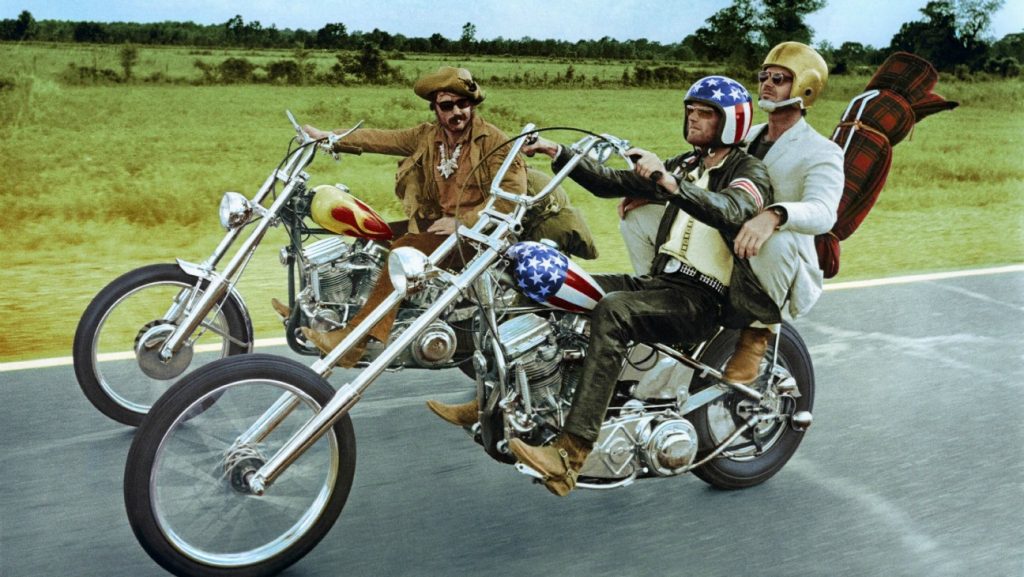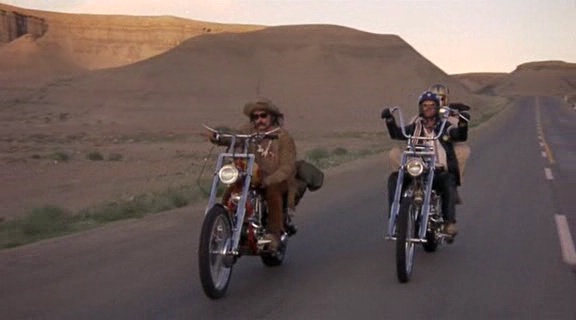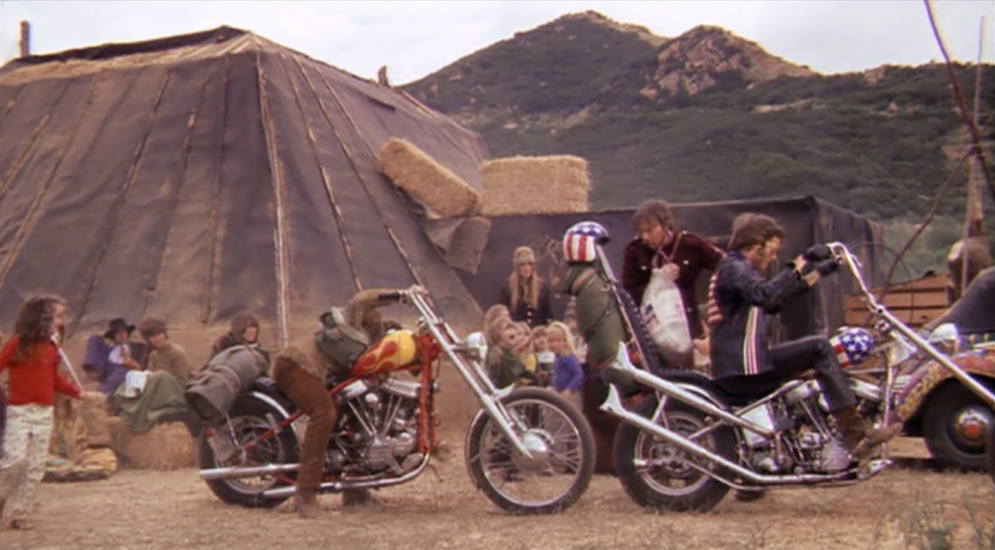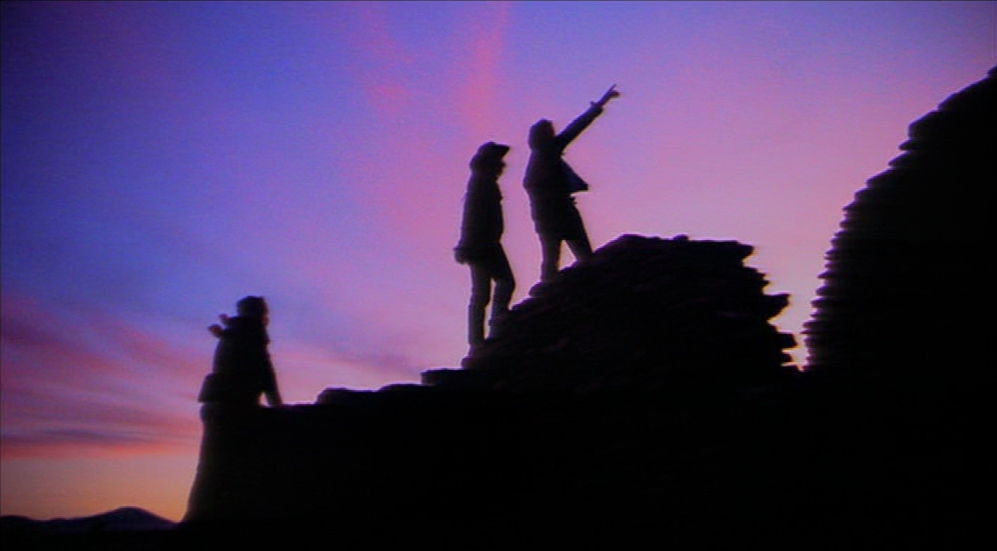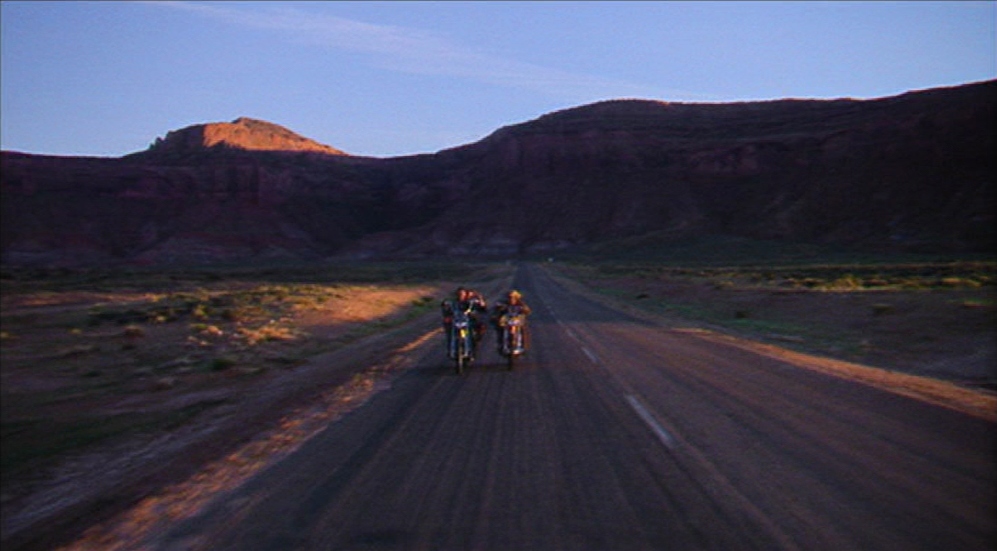
By the time the Thomas Edison company turned its cameras on Buffalo Bill, the imagery of the American West had been established for almost acentury: a vast empty landscape, with stunning scenery, few people, andpicturesque Native populations. Early western movies were able to use thesepaintings and illustrations to create exciting settings that were alreadyfamiliar to audiences. Early American cinema audiences were almost entirelybased in urban areas, particularly the immigrant-populated cities of theeastern seaboard, who only saw the West in the cinema and in art.
The western is the most landscape-centric film genre. Indeed, the landscape defines the western completely, as thestories are inextricably linked to their location. But the visual imagery of thewestern is drawn almost completely from painting: the sublime vision, dramatic sunsets, a sense of isolation, emphasis on topography such as mountains, rivers, and lakes. Figures are often depicted as almost miniscule.
But the paintings are themselves nostalgic, showing a vanishing way of life, hiding the reality of tourism and the squalor that existed in both Native encampments and settler villages. The popular media of the time did not elaborate on these things.
The western is a truly American genre, in painting and in cinema. The covered wagon trains, the cowboys, the Native American camps, and the monumental landscapes of Colorado, the Rocky Mountains, and the Great Plains belonged only to America. The appeal of the western was that it could be a shared cultural experience, bringing together immigrants from the four corners of the earth to participate in an “American” story. Exported, the western film made America a glamorous and exciting place.
The western film tries to have the best of both worlds: a stunning yet nostalgic landscape, almost completely unspoiled by humans, yet, paradoxically, the western is full of stories of human heroism, depredation, and betrayal. In the next chapter we will look at artistic depictions of heroism, and how they feed into cinema.
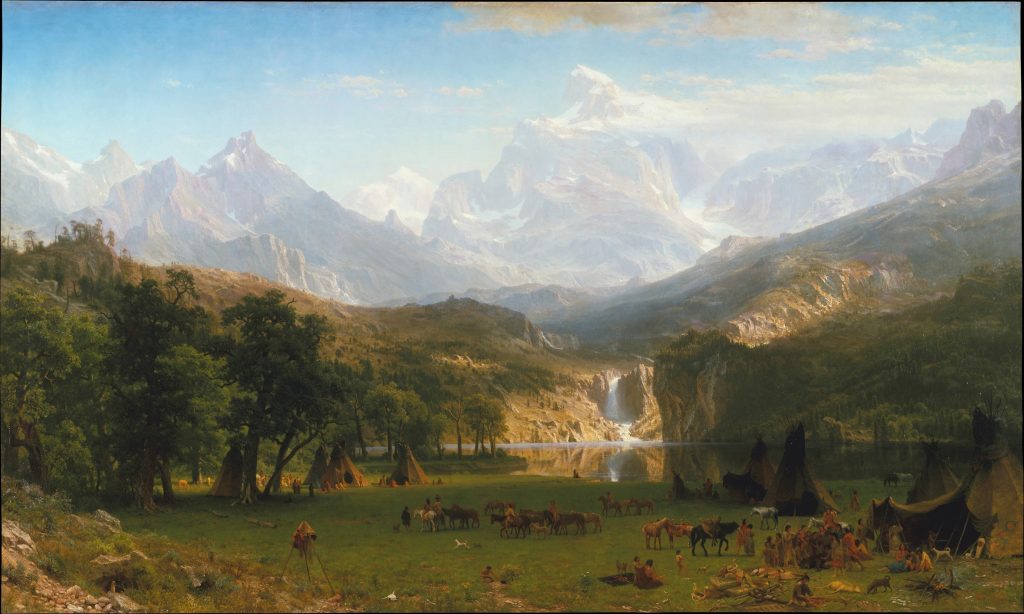
Albert Bierstadt 1863 Metropolitan Museum of Art
Although the road movie may seem to be the quintessential American genre, its roots lie in Europe and in a literary tradition known as the picaresque, in which the plot is structured as a journey. In cinema, by the middle of the twentieth century, the western began to merge into the road movie. The two have much in common: the movement of characters between civilization andwilderness, the contrast between civility and barbarism, and the wide open landscape. The road symbolizes and embodies America’s historical frontier ethos, recurring as a persistent theme of American culture.
The western had always offered a specific conception of American national identity typified by individualism and aggression. In the linear narrative structure of the road movie, these characteristics become concentrated and codified. The landscape of the road movie, as with the western, is the inexorable “third character” of the film—it both mirrors and influences the action and the mood.
Easy Rider, 1968 Dir. Dennis Hopper, DP Laszlo Kovacs
“It’s about 2 guys riding across the west, John Ford’s west, only they’re going to go east.” (Peter Fonda)
Two young men with motorcycles cut a lucrative drug deal and then ride across the USA to the New Orleans Mardi Gras. On their way they visit a hippie commune and a Mexican American farm, befriend a civil rights lawyer, and encounter intolerance and violence. Peter Fonda and Dennis Hopper wanted to make a movie that would take the pulse of the era, a time convulsed by the Vietnam War and the perceived “generation gap” between the conservative older generation and the youth.
Easy Rider contrasts “America the beautiful” with an ugly America: the beauty of the landscape against the brutality of its inhabitants. But not all of the landscape: the film idealizes the Southwest, with its dramatic desert vistas, populated by hospitable, spiritual folk—Native Americans, Hispanics, hippies and indicts the South. “In the Southwest the protagonists enjoy the freedom of the road, the hospitality of those they encounter in the beauty and mystery of the region’s wilderness.”
Conversely, the South, despite occasional glimpses of verdant beauty and Old South plantation houses, reveals African American poverty and a despoiled industrial world of oil refineries, cheap cafes, and ignorant bigots.
The movie was made on location, following much of the famed old Route 66 through California, Arizona, New Mexico, and Louisiana, and a great deal of it was shot on the open road by DP Laszlo Kovacs. Fonda and Hopper rode their motorcycles on the road, accompanied by the camera car, a 1968 Chevy convertible with the backseat taken out and a pinewood floor where the tripod was fixed. This allowed Kovacs to use a telephoto lens to offer many differentpoints of view while aligning the movement of the bikes, capturingthe landscape from the bikers’ perspective. “Laszlo was able to give us a sense of freedom of being on the road, of being able to experience America for the first time . . . he was able to be that metaphor of freedom”
(Cinematographer Ellen Kuras).
Kovacs, a refugee from the 1956 Soviet invasion of Hungary, recalls first crossing America by bus, sitting in the front seat. His first impressionof America was that it was a “devastatingly beautiful country . . .it left such an impression on me [. . .] that later on I was able to use it in my movies.” The trip also “taught me one lesson that the environment the background is so important it has to be a third character because it tells so much about people who live in it.”
The landscape is indeed a character in Easy Rider. As Fonda points out, the film reverses the classic western route of east to west.
The journey starts in hope, with stunning sequences in the Painted Desert and in Monument Valley (interestingly, the film crew left New Mexico and passed right through Texas; if they shot there, none of the footage is in the film) and ends on a nondescript roadside on the banks of the Atchafalaya River in upstateLouisiana. Kovacs invoked created romanticism through the use of lensflare; previously considered a grave camera error, Conrad Hall had usedit in 1967’s Cool Hand Luke. Kovacs saw its aesthetic possibility to createwhat he called “rainbows” of light, romanticizing the landscape andoffering a shimmer of hope that is belied by the film’s story.
